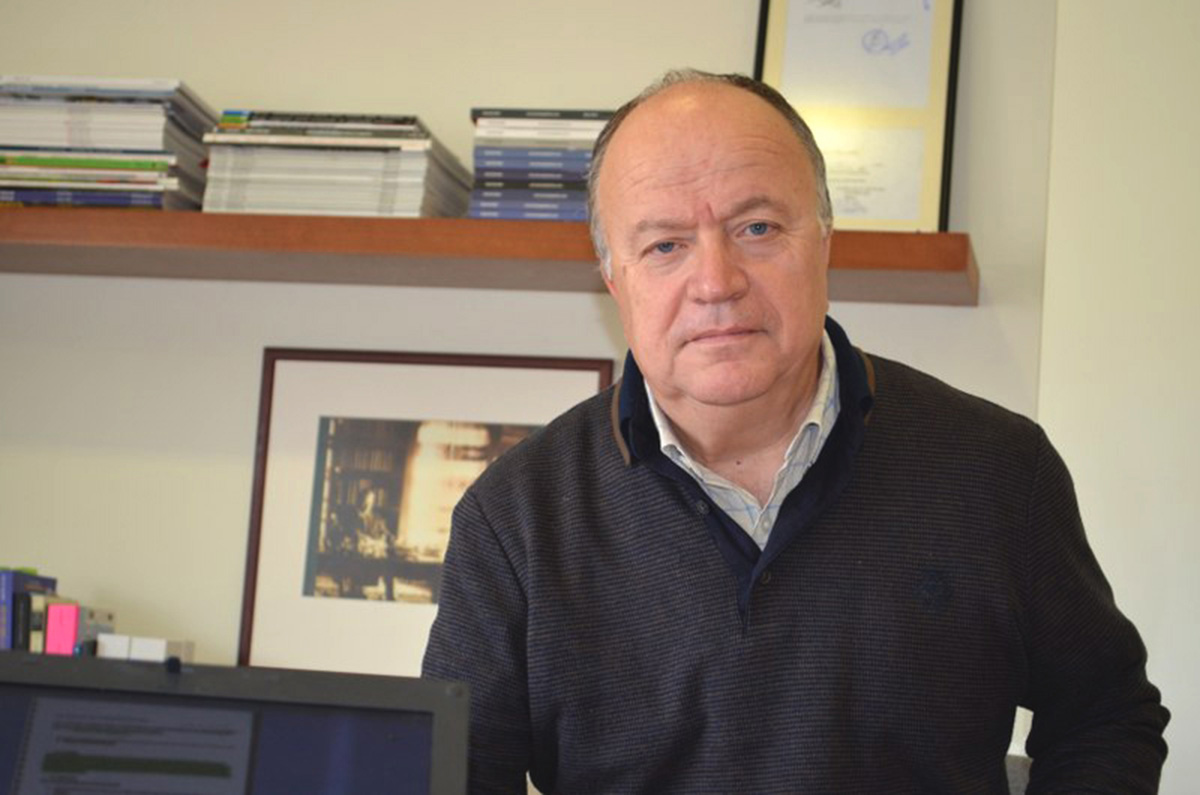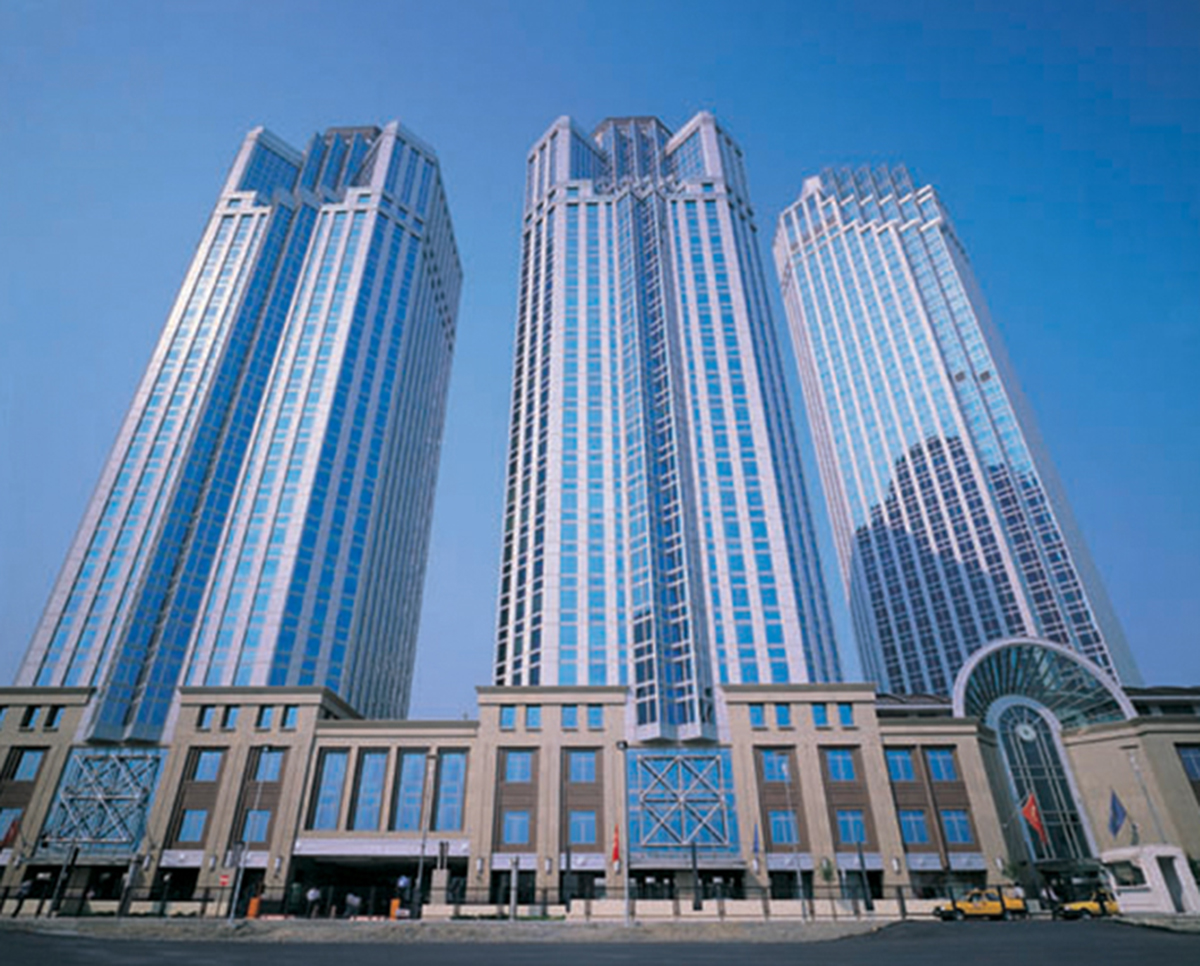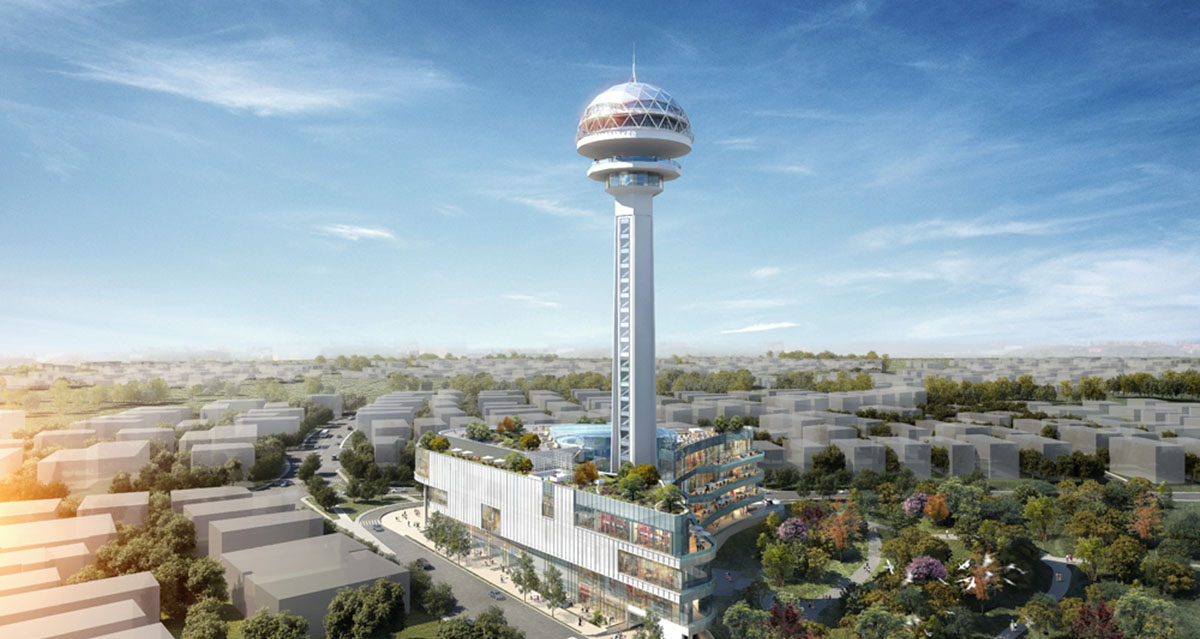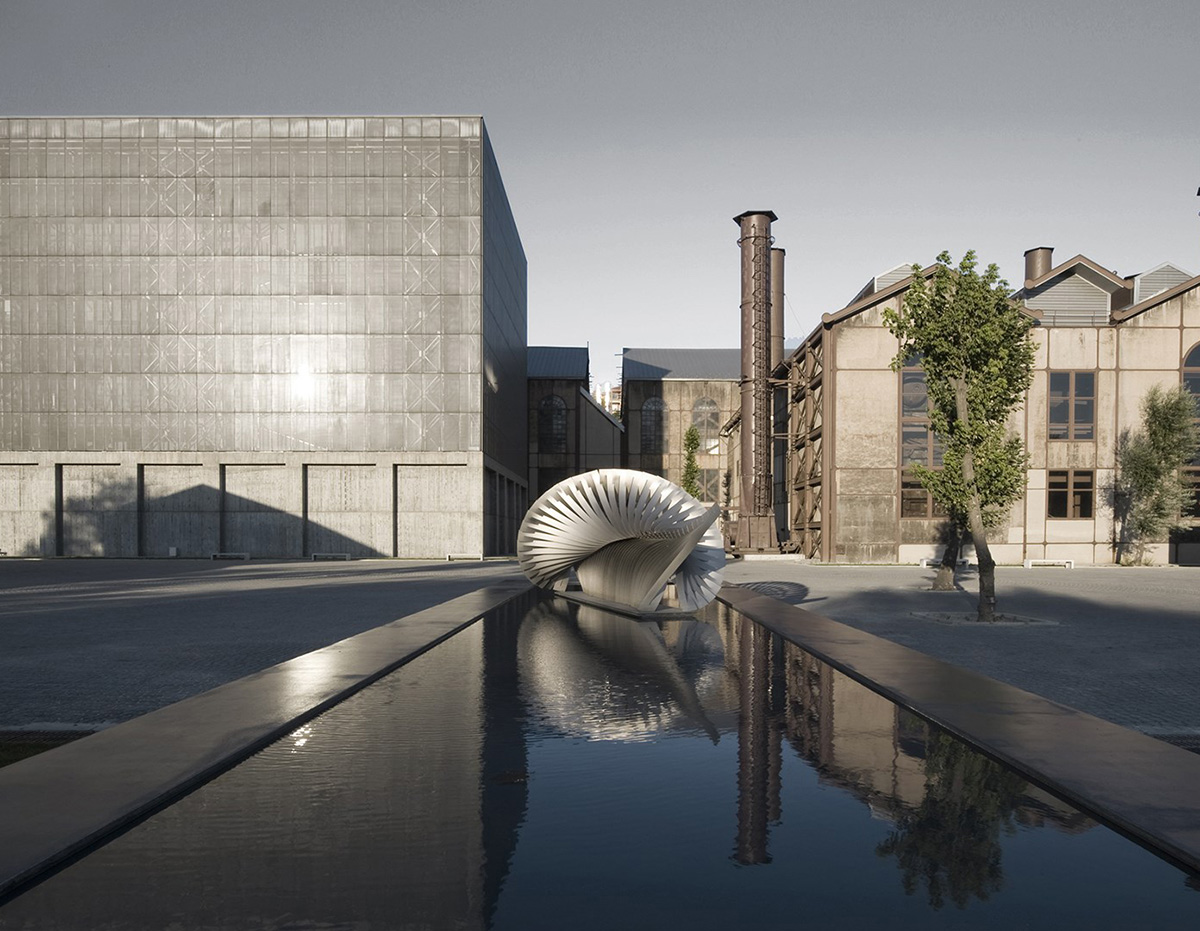Submitted by Berrin Chatzi Chousein
Project Management is a Jam Session Not a Symphony, says Selçuk Alten, Co-founder of Pro-ge
Turkey Architecture News - Mar 19, 2019 - 02:15 14849 views

Project Management is known as an unavoidable and integral part of architecture in the construction industry. But the dynamics of project management are still not so much clear for a successful management process for many industry stakeholders.
Regarding the internal dynamics, new approaches and processes related to the project management, World Architecture Community spoke with Selçuk Alten, Co-founder and Vice President of the International Construction Projects Management Company Pro-ge which continues its construction management facilities for over 18 years in the construction industry.
In the following exclusive interview, Selçuk Alten explained how Pro-ge directs a set of complex relations on project management, solves the problems of management processes and stressed how the company describes its accurate approach about project management at various scales, as well as the tips and tricks and secrets of management processes.
"Now we need a new dynamic, a new energy by cooperating with young management leaders and companies"
He said "the primary objective of the project manager who needs to see the bigger picture is to know walking through a minefield and defuse them without hurting anybody. The secret lies in an approach that puts forward "human", and takes professional ethics, transparency and science as guide."
In addition to this, based on the experience gained his over 45 years in the construction industry, Selcuk Alten also underlined that they have successfully achieved this stage of maturity in Pro-ge. Now it is time to act with a new dynamic and fresh energy on top of the know-how and the experience of Pro-ge for further success. For which they are ready to cooperate with young and dynamic management leaders and companies.

Selçuk Alten. Image © WAC
Read the full transcript of our interview with Selçuk Alten below:
Berrin Chatzi Chousein: We know you for many years through the works of your Construction Projects Management Consultancy Company Pro-ge where you are the Co-founder and Vice President. Can you first have a few words about Pro-ge for those who are not familiar?
Selçuk Alten: Pro-ge, as you said, is an Internationally well known Construction Projects Management Company, established in Turkey 18 years ago by two architects, one being myself. In the course of time there have been periods when the staff went up to more than 60 architects and engineers.
Pro-ge has completed Project Management Services for more than 40 big buildings, biggest having 380,000 square meters of building area, totaling up to about 2.5 million square meters. World Architecture Community, for which we are grateful, has featured some of these projects.
Berrin Chatzi Chousein: Actually WAC has published only the very interesting and challenging three of your many projects; Iş Bank Headquarters Complex; renovation and re-design of Bilgi University; and renovation of Atakule Tower. We know you have a lot more.
Selçuk Alten: Yes and I may say that you have made a good selection. The İş Bank Headquarters Complex is important because with its 180 meters height, nearly 20 years ago it was the highest building of the time in the region from Dubai to Frankfurt. But today the problems of a building, especially for high-rise buildings, are not very significant. The other two projects though contain some peculiar difficulties you may face even today.

The Turkish İşbank Headquarters Towers' construction management was realized by Pro-ge in Istanbul, Turkey. Image courtesy of Pro-ge
Berrin Chatzi Chousein: We understand that you have assumed management services of extraordinary projects of Pro-ge that you are a partner in according to the news published in WAC. One of them is a university campus, which is in Istanbul. A non-functioning power plant has been restored and currently it has education and culture functions thanks to this project. As for the Atakule project in Ankara, it has mainly required designs in which static and ground engineers are experts. You are an architect, as well. How was your relationship with designer architects, engineers in these projects?
Were there any experiences that you can call as problematic?
Selçuk Alten: Before we answer your question, let's define the position of the "designer" in project management services. In the great scheme of things, the most accurate approach is to define the position of the "designer" as one of the stakeholders of the project in the briefest way today. We cannot say that we have experienced significant problems as we have maintained our relations with designer architects and engineers in the framework of rules adopted for "stakeholder management", in which importance of contemporary project management services has increased.
Let's elaborate it.
Let's talk about the management approach first.
You may be surprised but I think that the concept of "management" which evokes top-down relations, which has lost its meaning.If our aim is to complete the project successfully, we would adopt the concept of "governance", which stipulates vertical relations of project stakeholders.
It may be a romantic approach but when we talk about "governance", I think about jam sessions in jazz improvisations. I came across a definition of “jam session” and it says: "jam sessions are for players to interact with other players and make music in a freewheeling environment, without having to be concerned about pleasing an audience. You will see the most successful partners if you watch a real jam session. In this sense, jam sessions like projects are efforts that start with a melody and end in a short while. In such a short while, you can watch a mutual respect, a very powerful communication, pushing the limits of musical instruments used for adding a pleasant sound to the melody, the solidarity between two coherent tunes that are played by both musicians, one of whom is at the background, and a great, joyful finale. In this regard, Project Management is a jam session not a symphony at all.
"Project Management is a jam session not a symphony at all"
We sought to establish a relationship with the project stakeholders right on the first day of the project.
Therefore, we have not experienced anything serious with the designer architects in the projects. We did not only have any problem but also strengthened our friendships.
Doubtlessly, there are reasons for that. Foremost, that the founding members of Pro-ge are architects is one of them. We know the concerns of designers, as we are like them and act in line with such concerns.
"The primary objective of the project manager who needs to see the bigger picture is to know walking through a minefield and defuse them without hurting anybody.
However, there is no doubt that the relationship between a project manager and a designer is not a problem-free area at all. We know that there is a discrepancy area open to problems between all project stakeholders that are in a contractual relationship. In such discrepancy areas, the parties usually tend to extend their area of movement and influence. To a great extent, problems arise from it. The primary objective of the project manager who needs to see the bigger picture is to know walking through a minefield and defuse them without hurting anybody. The secret lies in an approach that puts forward "human", and takes professional ethics, transparency and science as guide. I guess we made it in such projects.
I should sincerely state that we did a good job with designers on both projects.

The 1929 extension the Santral Istanbul building's construction. Left image: a view from the construction. Right image: completed building. Image courtesy of Pro-ge Project Management
Berrin Chatzi Chousein: You have followed the design process for both projects. The architectural design was highlighted in Santral Istanbul. As we learned from you, the highlight was on the engineering discipline in Atakule project. Are there any similarities or differences that attract your attention in both projects?
Selçuk Alten: Taking the life cycles of projects into consideration, the design activities considered to be completed prior to construction following the "design brief" are prepared with employer specifications and other information that may affect the project decisions. While it is frequently mentioned that design activities are spread over the entire project phases, it is generally perceived in that way.
It is not a stretch to say that design activities were in parallel with that of construction in both projects. The limits of "complicated", which is an overall character of the construction projects were pushed in both projects and reached a significantly "complex" nature. Analyzing, understanding such complexity, and clarifying the information that affects the design decision were required.
Let's talk about Santral Istanbul.
The existing structures had traces of significant structural deformations in the ground conditions, which were extremely weak for the carrier. Re-functioning of the structure was depended on the elimination of such deformations. And the architect could only perceive it following the completion of minimum strengthening of structure spaces and removal of the redundant equipment from the structure, which is not considered for protection for restoration and each new strengthening and equipment removed from the field brought new problems together with them.
It was the same for Atakule project.
The tower’s structure, which was higher than 110 meters, was calculated and built with the commercial block surrounding it half a century ago. This structure would be demolished and the tower would remain by itself for months. We did not have any information source other than the application drawings that are randomly brought together as there were no "as-build" projects and there were indications that such projects were grown away from during the application. We could only learn about the structure in all aspects by the removal of sections that should be demolished. This would bring another problem, while the block, which surrounds the building, would be removed, in almost all phases of the demolishment; the tower structure fell under the influence of different conditions such as wind. The information that we share with designers at the beginning of the projects under such circumstances with "design brief" was just ordinary requests of employers.
There were many unknown factors and we started to clarify the design information step by step with demolishment by following the carefully prepared demolishment scenario. Design and construction went hand in hand.
Designers got the support of experts and academics from almost all disciplines in both projects. As the project manager, we closely worked with designers by taking the budget, quality, time and scope into consideration, which we call as the "bigger picture" of the project.
All such things created a great, lovely and respectable coalition. That was what we aimed.
We chatted in a dinner with Şefik Çetinkay, who conducted the demolishment and steel construction of Santral Istanbul project recently after many years. After discussing other things, we started to talk about Santral Istanbul. Nevzat Sayın, an architect, was internationally awarded for his design in Santral Istanbul. Şefik worked with Nevzat Sayın in the field during the demolishment and construction and sought a solution for the problems of the structure. Şefik took out his mobile phone and showed us a WhatsApp message of Nevzat Sayın. It included a picture of the award and it says "Thanks to you..".
An architect awarded, shared his award with a builder sincerely he worked together with.
I was really glad.

Atakule Tower's construction management was realized by Pro-ge in Ankara, Turkey. Image courtesy of Pro-ge
Berrin Chatzi Chousein: You mentioned vertical and horizontal relations when you were answering the first question. Can you elaborate it for cooperation and relations between architecture and project manager?
Selçuk Alten: All people and organizations that are the stakeholders of any project, especially the project managers and architects, should be aware that they cannot cope alone with the problems of "complex" projects that contain many unknowns. Such project problems can only be coped with equal relations that highlight science, professional ethics and public decency, mutual respect and transparency that I have mentioned earlier. Undoubtedly, there would be those who believe in the "positivist" approach and argue that this work could be done with a traditional, top-down "imperative" management models. Moreover, these people are in the majority today. I would recommend that they take a look at the loss of resources they create with these approaches, and if they can, calculate the dimensions that these losses reach. What worries me is that this positivist approach is widely adopted in non-formal project management training.
As far as I can see externally that nowadays, our universities are talking about the "non-linear” processes of construction projects and also "linear" model is taken into consideration, which highlights positivism. However, construction projects offer a constantly changing environment in touch with nature. You need to have the ability to deal with this change to live and work in this environment. The education should focus on how to achieve these skills and have a "proactive" structure and the habit of "improvisation".
"Never forget that the primary duty of the project manager is managing the "change". I believe that this is only possible by adopting the designer's attitude"
Never forget that the primary duty of the project manager is managing the "change". I believe that this is only possible by adopting the "designer's attitude". We should seek for the main element that regulates the relations between the project manager and the designer, and the source of the problems and cooperation in that context. In this sense, "designer" is the role model of project manager. The project manager also recommends an action as a designer does with a view to managing the change and evaluates the criticism and contributions to such proposal and then reproduces the proposal with the new information that she/he has obtained and it is repeated throughout the project life cycle.
Both designer and project manager approach the change with the same reactions.
The designer and the project manager make a great contribution to projects if they demonstrate the ability to work jointly. Such relation excludes hierarchical approaches and is established on the same horizontal line and aims at a coexistence that feeds each other with information.

Santral Istanbul. Image courtesy of Emre Arolat Architecture
Berrin Chatzi Chousein: I have one last question but if you don’t want to answer I will take this matter out of this interview. There are rumors in the sector that you are considering emerging with others. After all these years of success why do you want to share the fruits of your rich reference list?
Selçuk Alten: You may certainly write about this matter, it is not a secret. Only we haven’t decided yet. But we are seriously thinking about this issue. My partner and me are getting old. We must accept this reality. We don’t have the enthusiasm and the energy anymore we had 10-15 years ago. For Pro-ge beside our experience, we need a new dynamic, a new path, and young management leaders or to merge with others who have these capabilities in the industry.
We shall certainly continue in the sector but in a more relaxed way, with a new team. I am writing a book about project management, teaching part time at a technical university. My partner is sharing his experiences by a web site. And of course, we shall also give time and priority to Pro-ge but more in an advisory basis.
(end of transcript)
About Pro-ge
Pro-ge is a project management firm providing management services through all of the steps and activities of a construction project’s life cycle. The company, led by Selçuk Alten and Hasan Barutçu, offers many services including pre-construction services, construction management, post-construction works as well as other services. The company's main target is to put first the reduction of waste of resources, in order to minimize the often difficult to perceive financial losses of the country and employers, and managing large and complex projects, while keeping the fundamental values as described in its website.
Pro-ge also runs its sister company Innocent (Innovation Centre for Design & Technology), with the academicians of Middle East Technical University who are experts in the fields of statics and soil mechanics. Such activities revealed good examples of contemporary human focused approaches. In other words, joint studies were carried out with emphasis on multiplism and integration, as proposed by modern governance approaches.
Top image: Selçuk Alten at a conference. Image courtesy of Pro-ge
> via Pro-ge
